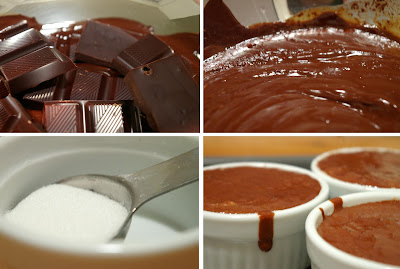When a blogger-hero of mine, Danielle from Habeas Brulee, posted a while back about pumpkin seed cocoa nib brittle, I knew I'd be making it sooner or later. For starters, the recipe is uber-simple. Just combine sugar and water with a bit of cream of tartar, heat 'em up, let them turn golden, add the rest of the ingredients, and pour out onto a sheet of silpat (or, in my case, parchment paper) in a thin layer. The hardest part of the recipe is waiting for the brittle to harden before digging in.
Even if it weren't easy, this brittle would be worth making. The sheer fact that it contains cocoa nibs makes it absolutely to die for. Cocoa nibs are raw, unsweetened cocoa beans in little bits that are perfect for everything -- including noshing.
In my experience, brittles made of just water and sugar (without butter or milk) are a bit too sugary for me. That's why I decided to add some dried black currants, those perfectly tart berries with quite a bit of zing. In keeping with the other proportions, I added 1/4 cup. I really enjoyed their tartness, and they cut the sweetness exactly as I'd hoped.
I also happened to have some already-roasted squash seeds, which had some sugar, salt, cayenne and cinnamon on them. They were perfect for this brittle, and I actually added a pinch of salt as well. It's still super-sweet, and Danielle's right -- it would be perfect atop a cheesecake or some other less-sweet dessert. That said, this is one classic fall treat you'll be sorry to miss.
Squash Seed Cocoa Nib Black Currant Brittle originally at Habeas Brulee
(adapted from Essence of Chocolate: Recipes for Baking and Cooking with Fine Chocolate
Toast the pumpkin seeds in a dry pan over medium heat, shaking very frequently, until they begin to pop. Set them aside to cool.
Set up a baking sheet covered with a Silpat or piece of parchment paper (something non-stick and flexible).
Bring the sugar, water, and cream of tartar to a simmer together in a small saucepan. Continue to simmer until it starts to develop a nice light caramel color that appeals best to you. Stir in the other ingredients, then quickly pour it all out onto the baking sheet and spread it thin as you can with a silicone spatula or wooden spoon.
Let it cool and harden before breaking off pieces to serve and devour.
Or you can just play with the sugar while you wait....
